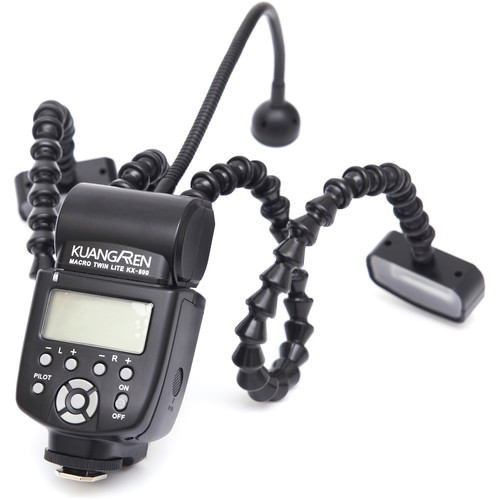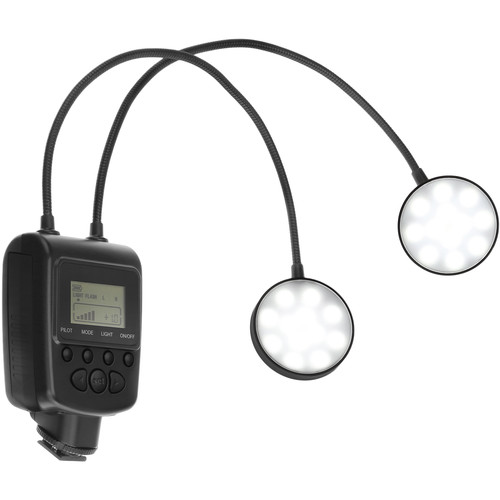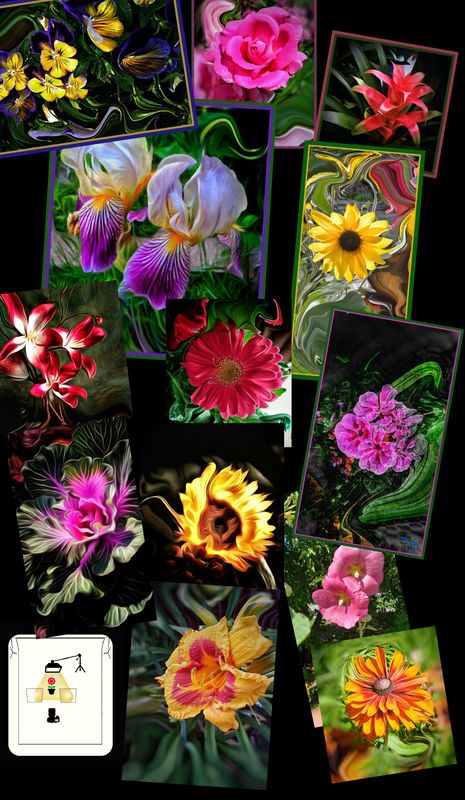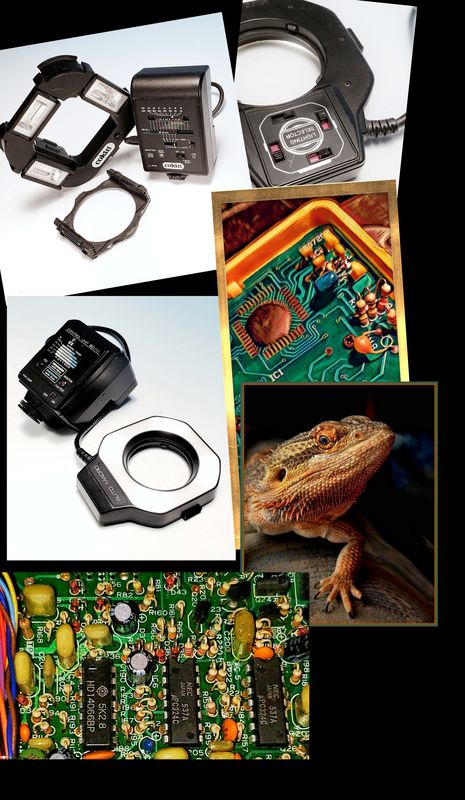Camera mounted light for macro
Apr 10, 2020 07:01:44 #
lsaguy wrote:
I've done a bit of research on doing macro photogr... (show quote)
After reading all of the other suggestions, I wonder if you ever considered using your Pop-up flash?
I have been using the Nikkor 200 mm micro for all my close-up work since 2008 I use the Su 800 commander + the r1c1 ring flash using one of the heads hand held, if I am out and don't have the flash set-up I use the pop-up with tissue as a diffuser or no diffusion, all depends on how I feel at the time.
I do use the flash to eliminate movement more than lighting the subject.
The whole I deal is experiment, experiment!!!!
Apr 10, 2020 07:22:44 #
billnikon
Loc: Pennsylvania/Ohio/Florida/Maui/Oregon/Vermont
lsaguy wrote:
I've done a bit of research on doing macro photogr... (show quote)
These are the camera mounted lights I use for macro.
https://www.bhphotovideo.com/c/product/1213356-REG/bolt_vm_210_flexible_macro_light.html
Apr 10, 2020 08:01:36 #
Apr 10, 2020 08:09:21 #
Apr 10, 2020 08:28:00 #
i also use a D300 , over 100k shots , i use the Amaran HN100 HALO ring light , do a google .
Apr 10, 2020 08:49:07 #
Thank you all so much! Some really great ideas I would never have thought of. Pringles cans just cracked me up but the next time I go to the store....
I looked at ring lights on Amazon and selected a Neewer model that was in my budget. I have one of their remote shutter releases that works well so I went with them.
Again, thank you all.
Rick
PS For those who such check things, not a single snarky remark. :-}
I looked at ring lights on Amazon and selected a Neewer model that was in my budget. I have one of their remote shutter releases that works well so I went with them.
Again, thank you all.
Rick
PS For those who such check things, not a single snarky remark. :-}
Apr 10, 2020 09:04:37 #
rhadams824
Loc: Arkansas
dsmeltz wrote:
An LED ring light is fairly inexpensive on the low end. Under $30. See https://www.bhphotovideo.com/c/product/1341881-REG/godox_ring48_ring_48_macro_ring.html
I have a Bolt VM-160 LED Macro Ring Light that has flash capabilities in addition to continuous light. Right and left light.
https://www.bhphotovideo.com/c/product/750878-REG/bolt_vm_160_led_macro_ring.html
Apr 10, 2020 09:07:16 #
lsaguy wrote:
I've done a bit of research on doing macro photogr... (show quote)
I am not a fan of camera mounted lighting ever. It provides illumination but as far as showing a flower in the "best light" most camera mounted, or near-camera mounted lighting fails miserably because it is flat and harsh.
Diffused lighting, coming from the side, will show off texture and contours in ways that harsh, flat lighting can't.
See examples below:
 _DSC8150 by Gene Lugo, on Flickr
_DSC8150 by Gene Lugo, on Flickr _DSC8124-Edit by Gene Lugo, on Flickr
_DSC8124-Edit by Gene Lugo, on Flickr _DSC6032-NIKON D810-3007990-(02-03-18) by Gene Lugo, on Flickr
_DSC6032-NIKON D810-3007990-(02-03-18) by Gene Lugo, on Flickr _DSC5991-NIKON D810-3007990-(02-03-18) by Gene Lugo, on Flickr
_DSC5991-NIKON D810-3007990-(02-03-18) by Gene Lugo, on FlickrApr 10, 2020 09:10:29 #
lsaguy wrote:
I've done a bit of research on doing macro photogr... (show quote)
I am not a fan of camera mounted lighting ever. It provides illumination but as far as showing a flower in the "best light" most camera mounted, or near-camera mounted lighting fails miserably because it is flat and harsh.
Diffused lighting, coming from the side, will show off texture and contours in ways that harsh, flat lighting can't.
See examples below:
 _DSC8150 by Gene Lugo, on Flickr
_DSC8150 by Gene Lugo, on Flickr _DSC8124-Edit by Gene Lugo, on Flickr
_DSC8124-Edit by Gene Lugo, on Flickr _DSC6032-NIKON D810-3007990-(02-03-18) by Gene Lugo, on Flickr
_DSC6032-NIKON D810-3007990-(02-03-18) by Gene Lugo, on Flickr _DSC5991-NIKON D810-3007990-(02-03-18) by Gene Lugo, on Flickr
_DSC5991-NIKON D810-3007990-(02-03-18) by Gene Lugo, on FlickrApr 10, 2020 10:15:44 #
Gene51 wrote:
I am not a fan of camera mounted lighting ever. It... (show quote)
Fabulous shots Gene. The proof of your technique(s) are the shots you produce.
Apr 10, 2020 10:38:33 #
I have the Nikon Nikkor 200mm f/4 AF-ED macro lens and it is a beast. It weighs 2-1/2 pounds so it is not for the faint of heart and it makes the camera quite "front heavy". They are also quite proud of it price too. On a positive note, it is a true workhorse with the quality that you would expect.
HOWEVER...it is important to note that the longer focal length macro lenses do provide a longer working distance to the subjects. As such, they require more flash power because the intensity of light diminishes with the square of the distance. It's a law of physics that is used to determine how far away stars are from earth for example.
There are many excellent choices of macro lenses today so finding one that fits your wants and needs gives you a lot to choose from.
HOWEVER...it is important to note that the longer focal length macro lenses do provide a longer working distance to the subjects. As such, they require more flash power because the intensity of light diminishes with the square of the distance. It's a law of physics that is used to determine how far away stars are from earth for example.
There are many excellent choices of macro lenses today so finding one that fits your wants and needs gives you a lot to choose from.
Apr 10, 2020 10:41:36 #
No, I'm sure he means beach. Those are the ones you can find on the beach after a large party. Why do you think he alluded to no cost other than time. It takes a few minutes to find just the right bottle.
--Bob
--Bob
dsmeltz wrote:
Did you mean "bleach" bottle? I tried that, but could only drink half the bottle before I got sick. 

Apr 10, 2020 10:47:08 #
I use my 200mm f4 Nikon macro lens about 95% of the time for macro. I also have 105mm and 55mm macro lenses. The 200mm has a tripod collar mount which I find to be very useful for tripod macro shooting.
Books have been written on how to light macro shots. Your camera is a d300 and may not be compatible with the latest Nikon flashes. That being said, you can buy a used Nikon flash that is fully compatible with your camera. Those flashes are listed in the d300 manual.
Check out Robert O’Toole’s website and search for macro. He has pictures of how he lights his macro subjects.
For fill light, consider getting a small cube light kelvin 5200 and use it hand held to light the subject. That is what I am using for macro lighting these days. These are about 1.5 inches on each side and are recharged with a usb cable.
The best book on Nikon flash is mike havens nikon creative lighting system. Get a copy and go to his website for his videos.
Books have been written on how to light macro shots. Your camera is a d300 and may not be compatible with the latest Nikon flashes. That being said, you can buy a used Nikon flash that is fully compatible with your camera. Those flashes are listed in the d300 manual.
Check out Robert O’Toole’s website and search for macro. He has pictures of how he lights his macro subjects.
For fill light, consider getting a small cube light kelvin 5200 and use it hand held to light the subject. That is what I am using for macro lighting these days. These are about 1.5 inches on each side and are recharged with a usb cable.
The best book on Nikon flash is mike havens nikon creative lighting system. Get a copy and go to his website for his videos.
Apr 10, 2020 11:01:47 #
tcthome
Loc: NJ
joer wrote:
I use reflectors on a speed light made from a white opaque beach bottle . The curved edges reflect the light downward and I control distance with the angle of the head. It cost nothing but a few minutes of time.
A great idea.
Apr 10, 2020 11:07:35 #
Gene51 wrote:
I am not a fan of camera mounted lighting ever. It... (show quote)
Exactly! there have been many suggestions regarding lighting equipment but very little about LIGHTING TECHNIQUE.
On camera lighting, flash or LED will usually produce FLAT lighting because the light source is striking the subject from the same angle as the lens so that DIRECTION of light does not yield light and shadow so there is a lack of modeling, texture, and dimensionality. A RING LIGHT is even FLATTER because the light source is coaxial to the lens.
Flat light, however, has a function as a FILL LIGHT source which is used in conjunction with a directional natural light source (sunlight, diffused daylight, hazy skylight, open shade, etc.) or another off-camera light
The Speedlight or LED source where the off-camera light becomes the main light that produces modeling. The flat of fill lig is set a weaker output so it does not overpower the main source.
Modifying the lig with commercially available or improvised accessories is to soften, spread, or diffuse the light but will not necessarily change the DIRECTION of the light unless it is bounced for an off-camera surface.
The ring light was originally designed for a special light technique where shadows would be detrimental to the image. Coaxial light is needed for photography subjects lie printed circuit boards, surgical fields, intraoral (dentistry) photography and certain kids of forensic or evidence photography where shadows cast from one component or detail in the subject would obscure important details. There are specialized ring lights with multiple flash tubes whereby half the tunes can be shut off enabling better modeling fr a coaxial source.
If you are shoot flower out-of-doors, in a greenhouse, or with window lighting, fill light can be supplied by an on-camera Speedlight or a simple reflector to serve as a fill source. If you are working indoors and are depending on your flash or LED system to supply adequate light for exposure and good aesthetics, a 2-light system is recommended. If you need the system to be attached to the camera, there are some specialized units with 2 heads.
To achieve good modeling, texture, and dimensionality, the main direction of light, whatever source is used, should be anywhere from 20 to 135 degrees off the camera/subject axis- this would be difficult to achieve with the mounted atop the camera. Funny thing is, even that complex "system" with all those light shown in another post pretty much all FLAT lighting. Quantity does not necessarily yield quality.
Before investing in any gear do a little experiment. Take a flower out in the sunlight in the morning or late in the afternoon and move it around so that the sunlight strikes it from various angles and observe the effect. Sometimes the lig for the back will transilluminate leaves and petals. A slightly flatter angle will illuminate the insides of flowers. When you get the FEELING of the light you will be able to replicate the effect with flash or LED lights. In natural light, a simple reflector made of cardboard and aluminum foil can yield excellent results.




If you want to reply, then register here. Registration is free and your account is created instantly, so you can post right away.







